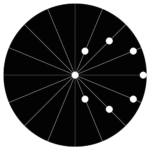i knew in the 2nd grade that standardized testing was bullshit. harry potter book 4 had just come out and i was at a good part. harry had just put his name into the goblet of fire.
during the standardized test, we were allowed to keep a post-test book on our desk. i diligently got started on part 1: english. at the time, all of the answers went on the same sheet, but all of the questions were in different booklets. so i finish all my english questions, read in my extra time, and then it’s part 2: math.
i realize i have answered all of my english questions on the math portion of the answer sheet. at first, annoyed but undeterred, i’m like. okay great i gotta erase every bubble. but i get bored around question 5 of doing this because… like… harry potter is sitting on my desk and i could just give them the wrong answers. so i answer maybe 10 whole questions in the math portion, copy the english answers over to where they actually belong, and then crack open the book and call it a day.
i obviously failed. this is the real life, not a movie. my parents were called in. i had scored in the lowest percentile. i was bad at math. i was concerningly bad at math. i could have done better just guessing than how i did with the english answers.
if this was just a funny story, someone would ask me “why did you do so badly when you usually get fairly average grades” and i would have said “i wanted to read harry potter, not take this stupid test.” but it’s the real life, and nobody asked. instead, i was branded stupid and bad at math. i got placed in a lower math than i needed to be in; got bored, stopped paying attention. knew i was in the “worst at math” group, started saying “i’m bad at math” and 100% stopped trying because the further i fell behind, the worse i got. through the rest of my academic career – until senior year in high school, i never got above a c on a math test, because i was “just bad” at math.
i had undiagnosed adhd. the only reason i know now i have adhd is because at 22 years old, i finally went to a therapist, who effectively said, “are you kidding me you have the most obvious case of attention deficit i’ve ever seen.”
but nobody had been looking. my one test grade had given teachers permission to not look, because, obviously, i was bad at math. the one time i got 100% on a math test – that one time in senior year – i remember my math teacher looking at it and saying “it’s clear that if you just focused, you could do the work.”
in college i’d take a math class and i actually “just focused” for the first time in my life – meaning i treated math as a challenge, but one i could overcome with the skills i’d learned all on my own, through constant work and practice. i got the highest grade in my class. i still think i’m bad at math.
which makes me wonder: how many people got fucked over because of something stupid like “i was too preoccupied with harry potter”. who had nobody looking out for them. who slipped under the radar because – come on, aren’t some people just bad at things?
I was undiagnosed ADHD too and am also Bad at Math. I took the SATs in high school and remember being a bit shocked at getting an exactly average Math score because I was convinced that Math was just something I was terrible at.
Now that I know I’m ADHD I can recognize that math was boring because of the repetition and my tendency to not do my homework affected my grades. But I still can’t shake the Bad at Math feeling. I long ago gave up on any idea of pursuing science as a career because obviously, I’d need math for that.
Which is kinda sad because while I am Bad at Math I always kind of found how numbers work to be fascinating and maybe if I’d found a way to keep my interest I could have been good at it
Standardized tests were a source of frustration because inevitably I’d test in the 99%+ percentile on at least English and social studies but my grades didn’t reflect that so why didn’t I just try harder and focus?




















